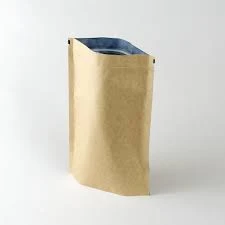- Afrikaans
- Albanian
- Amharic
- Arabic
- Armenian
- Azerbaijani
- Basque
- Belarusian
- Bengali
- Bosnian
- Bulgarian
- Catalan
- Cebuano
- chinese_simplified
- chinese_traditional
- Corsican
- Croatian
- Czech
- Danish
- Dutch
- English
- Esperanto
- Estonian
- Finnish
- French
- Frisian
- Galician
- Georgian
- German
- Greek
- Gujarati
- haitian_creole
- hausa
- hawaiian
- Hebrew
- Hindi
- Miao
- Hungarian
- Icelandic
- igbo
- Indonesian
- irish
- Italian
- Japanese
- Javanese
- Kannada
- kazakh
- Khmer
- Rwandese
- Korean
- Kurdish
- Kyrgyz
- Lao
- Latin
- Latvian
- Lithuanian
- Luxembourgish
- Macedonian
- Malgashi
- Malay
- Malayalam
- Maltese
- Maori
- Marathi
- Mongolian
- Myanmar
- Nepali
- Norwegian
- Norwegian
- Occitan
- Pashto
- Persian
- Polish
- Portuguese
- Punjabi
- Romanian
- Russian
- Samoan
- scottish-gaelic
- Serbian
- Sesotho
- Shona
- Sindhi
- Sinhala
- Slovak
- Slovenian
- Somali
- Spanish
- Sundanese
- Swahili
- Swedish
- Tagalog
- Tajik
- Tamil
- Tatar
- Telugu
- Thai
- Turkish
- Turkmen
- Ukrainian
- Urdu
- Uighur
- Uzbek
- Vietnamese
- Welsh
- Bantu
- Yiddish
- Yoruba
- Zulu
how much is 15 millimeters
Understanding the Measurement How Much is 15 Millimeters?
When it comes to measurements, precision is key, especially in fields like construction, engineering, and even cooking. One common metric unit that often comes into play is the millimeter (mm). In this article, we’ll explore the measurement of 15 millimeters, putting it into perspective and understanding its applications in various contexts.
What is a Millimeter?
A millimeter is a unit of length in the metric system, equal to one-thousandth of a meter. To give you a sense of scale, there are 10 millimeters in a centimeter, and 1,000 millimeters in a meter. The millimeter is commonly used in fields that require precise measurements, such as machining, woodworking, and textiles.
Visualizing 15 Millimeters
To visualize 15 millimeters can be quite enlightening. Imagine a common object, like a AA battery. The diameter of a standard AA battery is about 14.5 mm, which means that 15 mm is roughly the same width as this battery. This visualization helps contextualize the size and significance of millimeters in everyday life.
Another familiar reference would be the thickness of a ID card or credit card, which is typically around 0.76 mm. Therefore, if you stack up about 20 credit cards, you would achieve slightly less than 15 mm in thickness. These comparisons can be particularly useful when trying to grasp the concept of millimeters without having a ruler handy.
Practical Applications of 15 Millimeters
Understanding how much 15 millimeters is can be crucial across various fields. Here are some practical applications
1. Construction and Carpentry In construction, measurements are often crucial for ensuring that components fit together correctly. A piece of wood, for example, could need to be cut to 15 mm to fit into a specific space. Carpenters and builders often rely on millimeter accuracy to avoid costly mistakes.
how much is 15 millimeters

2. Jewelry Making In jewelry design, precision is key. A gem or a detail of a piece may be 15 mm across. Understanding this measurement can help jewelers create settings and designs that are both aesthetically pleasing and functional.
3. Textile Industry In fabric production, a seam allowance might be specified to be 15 mm. This allows for the accurate stitching of pieces together, ensuring that garments are constructed to fit well and are durable.
4. Scientific Measurement In laboratories, precision can mean the difference between success and failure. In many scientific experiments, researchers might need to measure small distances or escalations in millimeters, and having a clear understanding of what 15 mm represents can be integral to their work.
5. Everyday Use In everyday situations, you might encounter 15 mm in various products, such as screws or bolts that may have a diameter of that size, affecting the choice of tools used.
Converting Millimeters to Other Units
For those used to the imperial system, converting millimeters to inches can provide better comprehension. One inch is equal to 25.4 mm, so to convert 15 mm to inches, you can use the following equation
15 mm ÷ 25.4 = 0.591 inches
This means that 15 mm is slightly less than 0.6 inches. This conversion can be handy if you are more familiar with the imperial system and need to work interchangeably with metric measurements.
Conclusion
Understanding how much 15 millimeters is can offer valuable insight into a variety of practical applications across numerous fields. Whether in construction, jewelry making, or everyday tasks, this small but significant measurement plays a crucial role in ensuring precision and accuracy. By familiarizing ourselves with millimeters and their applications, we can enhance our problem-solving skills and improve our understanding of the world around us. Next time you hear or see a reference to 15 mm, you’ll have a better appreciation for what that measurement truly entails.













